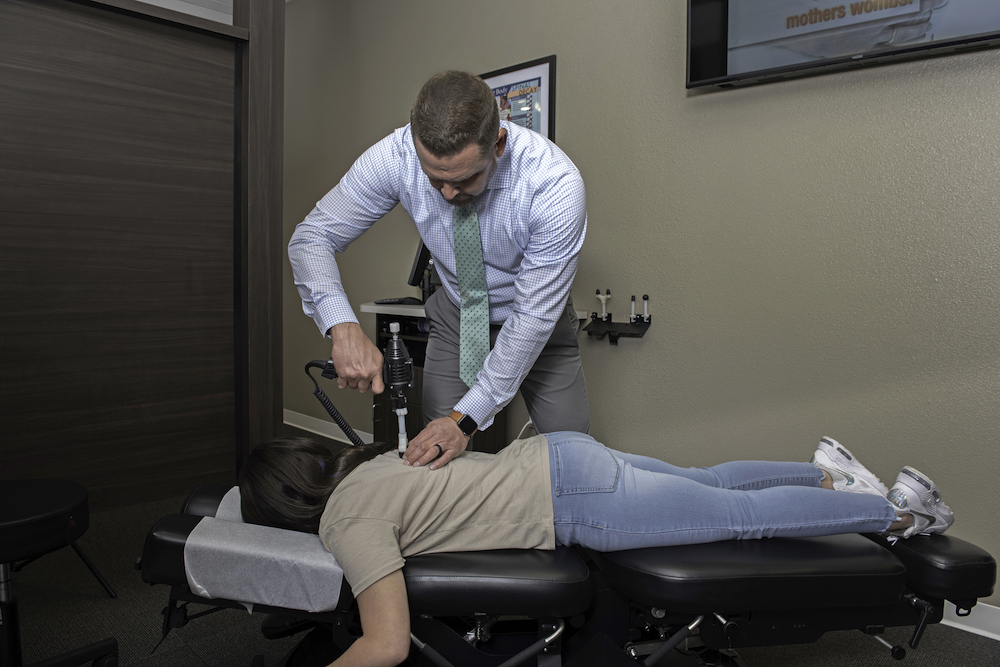How to Prevent Lower Back Pain
4 min read

According to a May 2019 study by the Annals of Internal Medicine, more than a quarter of working adults had chronic low back pain. And that doesn’t even count those with upper back pain or neck pain! It’s a problem. As the second most common reason to visit a doctor, lower back reduces productivity at work, but even worse it makes it hard for you to enjoy your day to day activities and even simple tasks like getting out of bed.
Can you prevent lower back pain before it starts so you don’t have to go through the misery that so many people experience? While there are no guarantees, here are some tips for preventing lower back pain and/or keeping it from returning.
Tips for reducing lower back pain
- Get in shape
- Watch your weight
- Sleep in a good position
- Improve your posture
- Bend and lift correctly
1. Get in Shape
Most people simply don't get enough exercise. Working out regularly can reduce inflammation and muscle tension, while strengthening the muscles that support your spine. If you have lower back pain, exercise can sound like a terrible idea. Take it slowly and only do what you can. But when you start to feel better consider adding stretching exercises to improve your flexibility and reduce the risk of injury from daily tasks such as lifting, carrying your child, or pushing a heavy grocery cart. When your back is feeling good, you can also add crunches, wall sits, "bird dogs" and other core strengthening exercises. Avoid doing full sit-ups and leg lifts because these tend to put a lot of pressure on the lower back. If you already have back and joint pain, exercising in water can be particularly helpful, as it takes a lot of the strain caused by gravity away.
 Bird dog exercise
Bird dog exercise
It’s always a good idea to talk to your doctor or chiropractor before putting together an exercise program, especially if you have a history of lower back pain. In our office, we can recommend a helpful exercise plan based on your specific pain points.
2. Watch Your Weight
Obesity is a major cause of back pain because of the added strain it puts on your spine and other joints. This is particularly true for those who tend to carry their extra weight around their midsection. Adding an exercise program, like we mentioned already, is an important part of this process. But your weight is primarily a result of what you eat. Practice good eating habits and eat more fresh fruits and vegetables and less carbs and refined sugars. If you aren’t sure what types of foods to eat or you need a weight loss diet, it may be worth seeking a referral to a nutritionist. Avoid fad diets like keto and other things that don’t include a balance of fruits, vegetables, proteins and whole grains.
3. Sleeping Properly Can Reduce Back Pain
The ideal sleeping position is on your side. If you sleep on your back, you want to put a pillow under your knees so your back does not flatten out. Sleeping on your stomach arches your lower back and puts pressure on your neck. Make sure you use a pillow that is not too high and not too flat. The pillow should fit into the curve of your neck without adding pressure. Also, be sure your mattress isn’t too hard, or too soft. You don't need one of those expensive adjustable mattresses, but do make sure your mattress is in good condition. If you sleep on your back, put pillows under your knees to relieve pressure on your lower back. And if you absolutely can’t sleep unless you’re on your stomach, place a pillow under your hips to try to reduce the curving of the lower back.
4. Use Good Posture to Keep Back Pain Away
Most of us slouch. This is particularly true if we are using our phones, working on a computer, or watching a movie on a tablet. When possible, watch your movies and TV shows on a large screen a distance away. Make sure that your workstation is set up with proper ergonomics both at work and at home. The top of your monitor should be about five inches above your eye level; if it isn't, adjust your chair. If you use a laptop all the time, invest in an external keyboard and a laptop stand to make sure that your monitor is at the right level.
Get a chair with a straight back or good low back support, and try to sit with your knees slightly higher than your hips. When standing for a long period, keep your head up and stomach in.
Learn more about the proper sitting position on our blog how to prevent back from sitting at work.
You might also want to avoid high heels (if you aren’t already). And if you need to wear them, try to limit the amount of time. Carry a second pair of shoes to switch into if your back starts to hurt.
5. Use Correct Lifting Technique to Reduce Back Pain
Finally, always lift correctly. Too many cases of chronic lower back pain start with an injury caused by incorrect lifting. Never bend over at your waist to lift, but rather squat first, pull in your stomach muscles and hold the object close to your body. Then lift by coming back out of your squat. Avoid twisting your torso to lift and try to push, rather than pull, heavy objects or carts.
Never lift beyond your capacity and don't be afraid to ask for help. Invest in wheeled luggage or a cart you can strap a suitcase to for vacations. Also avoid carrying a lot of weight in a backpack, and if you do, always hang it from both shoulders, never just one.
Preventing back pain means looking after your body; and exercising and eating well will help your overall health. If you are looking for personalized tips to prevent back pain, especially if you have had back problems in the past, contact our office in The Woodlands to request an appointment.





